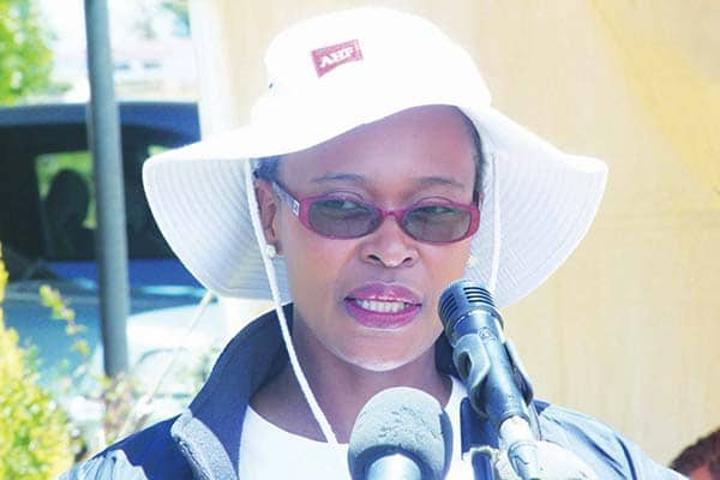Africa-Press – Lesotho. Reports that the risk of passing on the HIV virus is significantly eliminated by effective treatment is a fillip in local efforts to eradicate the condition that affects a sizeable chunk of Basotho, health experts have said.
Landmark results of a study conducted among gay men in the United Kingdom and reported in the latest of the medical journal – the Lancet – should spur organisations involved in the decades-long combat against HIV and the government to encourage people to test and go on anti-retroviral treatment.
A study of nearly 1,000 gay male couples in the UK with one HIV positive partner who took antiretroviral therapy (ART) found no new cases of transmission to the HIV-negative partner during sex without a condom.
Over the course of the eight-year study, 15 men were infected with HIV, the virus that causes AIDS. But genetic tests showed that the transmissions were a result of the HIV-negative men having sexual relations with someone other than their regular partner.
The report shows that using ART to suppress the HIV virus to undetectable levels renders it incapable of transmission during sex, according to the researchers. If everyone in the world with HIV knew their status and had access to effective treatment, no new cases would occur, the study suggests.
This week local HIV experts reacted to the report, saying Lesotho which has the second highest HIV prevalence rate in the world at 25 percent of the population, or one in four people in the country reportedly living with HIV, would benefit from the research findings.
AIDS Health Foundation (AHF) country Programme Manager Mapaballo Mile hailed the study results, saying this may prove to be a stitch in time to save lives and chip away at stigma surrounding the condition.
She notes that since introduction of the Test and Treat programme in 2016, where HIV positive people go on treatment early, more HIV positive people that have been on treatment and adhered to it for six months and more have reached a suppression stage whereby their viral load is suppressed and undetected.
She adds that at this stage, the risk of transmission of the disease is reduced by 96 percent. She says there is always a small risk of infection depending on an individual’s body response toward treatment and contact with an infected person’s bodily fluids.
She says this is a big achievement compared to a decade ago when people were put on treatment when their CD4 was under 250 and later increased to 500 when it was discovered that most people die even before reaching that stage while others react it very badly and struggle to withstand the side effects of the treatment.
Then, most patients started treatment when their bodies were already weak and could not stand the side effects of the ARVs, and reaching a stage where their viral load was suppressed became difficult.
She adds the suppression stage is a milestone towards HIV/AIDS eradication as more people lead a healthy life without any or with very few new infections. Mile notes that the suppression stage saves lives and money spent on health issues.
“Currently, the lifespan of an HIV positive person who is leading a healthy life and taking their medication well is equal to that of a HIV negative person who is also leading a healthy life,” Mile said.
She, however, emphasised that it is important that people whose viral load is suppressed keep on taking the ARVs and avoid engaging in unprotected sexual activities and not get in contact with body fluids that can put them at the risk of re-infection.
Re-infection is dangerous and can be more active than the virus the person was already treating. She notes that not taking medication properly and not eating well due to poverty are among challenges that can stop people from reaching a point where their viral load is undetectable.
To encourage people living with HIV to take their treatment as prescribed by their doctors, the Ministry of Health has established Community Based Art Groups where people from the same area help each other collect medication and monitor each other’s health.
Liboti Rapapa, an Elizabeth Glaser Pediatric Aids Foundation (EGPAF) nurse at Mafeteng hospital who deals with community-based arts groups, notes that taking HIV medication without social support promotes the stigma.
This was exacerbated by financial problems and lack of emotional support. Community support groups, he said, had seen men who are mostly reluctant to open up about health issues join the groups and testing.
He also noted that the groups have changed people’s attitude towards HIV. According to him the groups help in tracking patients who disappear or may have stopped taking medication.
Also, the Ministry of Health has opened men’s corners in clinics where men are attended by male nurses and doctors to encourage them to open up on health issues. Culturally, Basotho men avoid being in the same waiting room with women and children. Even when sick, men often delay seeking clinical care.
Although men are less likely to utilise HIV services, they account for a significant proportion of new HIV infections and subsequent onward transmission to their female partners.
Expert research has shown that men have not benefited much from Test and Treat, compromising Lesotho’s ability to reach the 90-90-90 target and furthering the HIV epidemic in adolescent girls and young women.
Consequently, EGPAF has also introduced comprehensive men’s clinics at selected high volume health facilities to scale up Test and Treat for men. According to Kamohelo Leroba, a nurse at the men’s clinic in Mafeteng Lecoop, the clinic has encouraged more men to attend health services as they feel free to talk about their health challenges to other men.
Leroba noted that the clinic goes on outreach programmes to villages to attend to those not able to come to clinics like herd boys and the disabled there.
The Ministry of Health and other stakeholders are determined to meet the global 90-90-90 vision while at the same time providing social support to those affected and infected.
Lesotho has implemented several strategies to ensure that by 2020, at least 90 percent of Basotho would have tested, and 90 percent of the tested are on medication while 90 percent of those on medication will have their viral load suppressed.
To achieve these goals, EGPAF would by 2020 have engaged at least 500 adolescents and young people in programmes at both national and local levels, have built district capacity to include adolescent and youth-friendly services at health facilities and identified the 90 percent of adolescents and young people living with HIV.
“We will also have linked all adolescents, young people and young pregnant women diagnosed with HIV to care, provide comprehensive quality care and treatment to 90 percent of adolescents and young people living with HIV.
We will also have achieved viral suppression in 90 percent of adolescents, young people and young mothers living with the virus and support and have linked at least 15 000 adolescent and young people to the needed referrals and community resources that facilitate their transition from adolescent to adult care.
“We are also ensuring that children be born free of the virus by supporting and encouraging women aged between 15 and 45 to test during pregnancy and lead a healthy life until the baby is born,” EGPAF spokesperson Palesa Mats’ase said in a recent interview.
A 2017 global information and education on HIV and AIDS report notes that Lesotho is one of the countries hardest hit by HIV, with the second highest HIV prevalence after eSwatini.
It further shows that HIV prevalence was 23.8 percent in 2017, and has been around this level since 2005. “An estimated 320,000 people were living with HIV in Lesotho and 4,900 died from AIDS-related illnesses in 2017.
Overall, HIV incidence is declining, from 30,000 new infections in 2005 to 15,000 new infections in 2017. “Lesotho’s main mode of HIV transmission is through heterosexual sex, accounting for 80 percent of new infections in 2014.
“In 2017, 80 percent of people living with HIV in Lesotho were aware of their status, 74 percent of all those living with HIV were on treatment,” the report reads.
It shows that the percentage of people on treatment who were virally suppressed in 2017 was 68 percent, adding stigma remains a barrier to HIV testing and treatment, particularly among men and people from key populations.
Although classified as a lower middle-income country, 57 percent of Lesotho’s population live below the poverty line. “High levels of poverty, coupled with HIV and AIDS, has led to the country’s low life expectancy of just 52 for men and 55 for women.
This has resulted in a slow response to the HIV epidemic. “Although progress has been made in some areas, there are still many barriers to overcome, including around financing the response and breaking down stigma,” reads the report.
It further shows that Lesotho’s progress towards 90-90-90 target is 80 percent of people who are aware of their HIV status, 92 percent of people on treatment and 92 percent whose viral load is suppressed.
According to the National Guidelines for HIV and AIDS Care and Treatment, antiretroviral treatment is the best treatment for HIV so far. ART reduces HIV-related opportunistic infections and treatment removes the risk of passing on HIV.
Lesotho in 2016 became the first country in sub-Saharan Africa to institute the Test and Treat programme, which aims to put all people with HIV on ART.
For More News And Analysis About Lesotho Follow Africa-Press






